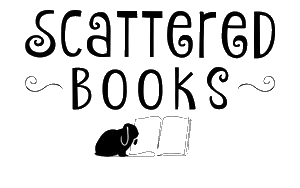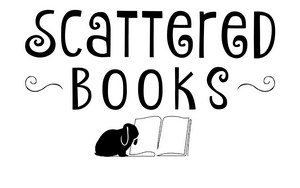
25 Nov Book Six of the Dune Series, “Chapterhouse: Dune” – Last Dune Book by Frank Herbert
 Book Review: Chapterhouse: Dune by Frank Herbert
Book Review: Chapterhouse: Dune by Frank Herbert
Introduction
Overview: “Chapterhouse: Dune,” the sixth and final novel in Frank Herbert’s legendary Dune series, stands as a monumental work in the science fiction genre. Published in 1985, this novel continues to explore the intricate and complex universe that Herbert meticulously built over the decades.
Thesis: In this review, we delve into the depths of “Chapterhouse: Dune,” examining its narrative structure, thematic richness, and Herbert’s masterful use of language and world-building.
Reading Age: The book is suitable for readers aged 15 and above, given its complex themes and intricate plot.
Buy the book on bookshop.org or download the audiobook on libro.fm
Know a science fiction fan? Get them a custom book basket with the whole Dune series!
Detailed Summary of “Chapterhouse: Dune”
“Chapterhouse: Dune,” the sixth installment in Frank Herbert’s Dune series, continues the intricate saga of the Dune universe. The story primarily revolves around the Bene Gesserit Sisterhood’s struggle to maintain their influence and survival in a universe that has been drastically altered by the events of the previous books.
Setting and Context
The novel is set on the planet Chapterhouse, which the Bene Gesserit have transformed into a new desert world similar to Dune (Arrakis), complete with sandworms capable of producing the all-important spice, Melange. This new Dune serves as a crucial asset for the Sisterhood in their ongoing struggle for power and influence.
 The Bene Gesserit Sisterhood
The Bene Gesserit Sisterhood
The central focus of the narrative is the Bene Gesserit Sisterhood, led by Mother Superior Darwi Odrade. The Sisterhood is facing existential threats from the Honored Matres, a violent and aggressive group that has emerged from the Scattering (the diaspora of humanity into the wider universe). The Bene Gesserit, known for their political maneuvering, psychic abilities, and control over their own biology, are in a precarious position, forced to defend themselves against the Honored Matres while also grappling with internal philosophical and strategic debates.
 The Honored Matres
The Honored Matres
The Honored Matres, ruthless and possessing terrifying powers, are returning from the Scattering and conquering planets. Their aggressive and sexually domineering tactics present a stark contrast to the more subtle and manipulative methods of the Bene Gesserit. The clash between these two powerful groups forms a central theme of the novel.
Plot Development
The narrative weaves through various subplots, including the Bene Gesserit’s efforts to negotiate and strategize against the Honored Matres, the training and integration of Murbella into the Sisterhood, and Duncan Idaho’s unique role as he harbors secrets that could alter the course of the conflict.
The story also delves into the deeper philosophies and strategies of the Bene Gesserit, their view on humanity’s future, and the ethical implications of their breeding program, which has been central to the Dune series.
Climax and Conclusion
The climax of the novel is marked by significant confrontations between the Bene Gesserit and the Honored Matres. However, Herbert’s narrative leaves many questions unanswered and plot lines open, as he passed away before he could complete the series. This has led to various interpretations and subsequent expansions by other authors.
Themes and Symbolism
The book is rich in themes of power, survival, adaptation, and the human condition. It continues Herbert’s exploration of the interplay between politics, religion, and individual agency. The transformation of Chapterhouse into a new Dune symbolizes the ongoing cycle of destruction and rebirth, a central theme in the Dune series.
“Chapterhouse: Dune” stands as a testament to Frank Herbert’s skill in creating a complex and thought-provoking universe, leaving a lasting impact on the science fiction genre.
Theme Details
- Power and Survival: The struggle for power and survival is central, reflecting in the Bene Gesserit’s tactics and their adaptability in the face of extinction.
- Evolution and Change: Herbert explores the theme of evolution, both biological and cultural, as humanity and other species continue to adapt in his ever-changing universe.
- Philosophical and Religious Overtones: The book delves into philosophical and religious discussions, questioning humanity’s place in the universe and the nature of power.
Characters
Darwi Odrade
Darwi Odrade, the Mother Superior of the Bene Gesserit, is a central figure in “Chapterhouse: Dune.” She is a descendant of Siona Atreides, a character from previous novels, and inherits the Atreides’ ability to be invisible to prescient vision. Odrade is portrayed as a deeply thoughtful and strategic leader, often grappling with the immense responsibilities and ethical dilemmas of her position. Her leadership is defined by a blend of Bene Gesserit traditionalism and innovative strategies to counter the threats facing the Sisterhood. Odrade’s character development throughout the novel showcases her as a leader who is not only tactical but also compassionate, often considering the broader implications of her decisions on humanity.
Murbella
Murbella is a fascinating character whose journey represents a bridge between the Bene Gesserit and the Honored Matres. Initially an Honored Matre, she is captured by the Bene Gesserit and gradually becomes integrated into their order. Murbella’s character arc is one of transformation and self-discovery, as she learns to reconcile her Honored Matre training with the philosophies and practices of the Bene Gesserit. Her unique position gives her insights into both groups, making her a key player in the unfolding events. Murbella’s internal conflict and gradual shift in loyalties illustrate the novel’s themes of identity, adaptation, and the blending of different cultures and ideologies.
Duncan Idaho
Duncan Idaho, a character recurring throughout the Dune series, appears once again as a ghola (a clone with restored memories of his previous incarnations). His character serves as a connection to the past events of the Dune universe and as a catalyst for change in the present narrative. The Duncan Idaho ghola in “Chapterhouse: Dune” is unique due to his accumulated memories and experiences from past lives, giving him a multi-layered perspective on the events unfolding around him. His role in the novel is complex, involving secret plans and his evolving relationship with the Bene Gesserit. Duncan’s character often raises questions about identity, loyalty, and the nature of consciousness, reflecting the novel’s deeper philosophical inquiries.
Other Characters
Other notable characters in the novel include:
- Sheeana Brugh: A young Bene Gesserit acolyte with the ability to control the sandworms, continuing her role from “Heretics of Dune.”
- Bellonda: A Bene Gesserit archivist, often characterized by her rigid adherence to tradition and skepticism of Odrade’s leadership.
- Tamalane: One of the leaders of the Bene Gesserit Council, playing a significant role in the political and strategic decisions of the Sisterhood.
- Scytale: The last Tleilaxu Master, who holds secret genetic material that is of great interest to the Bene Gesserit.
Each of these characters adds depth to the intricate tapestry of “Chapterhouse: Dune,” contributing to its rich exploration of themes such as power, identity, and the complexities of human nature and societal evolution.
Analysis
Strengths: Herbert’s strengths lie in his complex world-building and his ability to weave intricate plots with deep philosophical underpinnings. His character development, especially of female characters, is notable in this book.
Weaknesses: Some readers may find the dense narrative and numerous subplots challenging to follow.
Literary Devices: Herbert masterfully uses symbolism and allegory, especially in representing the desert and the spice Melange.
Evaluation
- Audience Suitability: Best suited for readers who enjoy deep, thought-provoking science fiction.
- Comparisons: This novel can be compared to its predecessors in the Dune series, maintaining the high standard of complex storytelling.
- Recommendation: Highly recommended for fans of the Dune series and readers interested in philosophical science fiction.
Potential Test Questions with Answers
- Question: What is the primary focus of “Chapterhouse: Dune”?
- Answer: The primary focus is on the Bene Gesserit Sisterhood and their survival.
- Question: How does “Chapterhouse: Dune” compare to the earlier books in the series?
- Answer: It continues the complex storytelling and thematic exploration of its predecessors, with a greater focus on the Bene Gesserit.
Book Details
- Book 1: Dune
- Book 2: Dune Messiah
- Book 3: Children of Dune
- Book 4: God Emporer of Dune
- Book 5: Heretics of Dune
- Book 6: Chapterhouse Dune
Series and Other Books
“Chapterhouse: Dune” is the final book in the original Dune series. Other books in the series include “Dune,” “Dune Messiah,” “Children of Dune,” “God Emperor of Dune,” and “Heretics of Dune.”
Author Section: Frank Herbert
Frank Herbert (1920-1986) was an American science fiction writer best known for the Dune series. He won multiple awards, including the Hugo and Nebula Awards. Other notable works include “The Dragon in the Sea” and “The Dosadi Experiment.”










